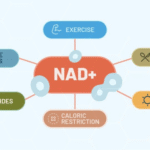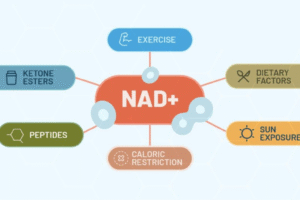
Neurologists play a crucial role in treating neuromuscular diseases. These conditions affect both nerves and muscles. They impact how muscles work and how well signals travel from the brain. For example, conditions like ALS, muscular dystrophy, and myasthenia gravis require precise care and management. Neurologists use their expertise to diagnose and develop treatment plans. Their work is vital, much like how concussion connecticut highlights the importance of specific knowledge in addressing brain injuries effectively. Understanding their role can help us appreciate the complexities of these diseases and the critical care involved.
Understanding Neuromuscular Diseases
Neuromuscular diseases can be complex and vary in their effects. They often lead to muscle weakness and fatigue. These diseases can also affect movement, breathing, and even heart function. Diagnosis requires a combination of clinical evaluation and tests. One can see why a neurologist’s expertise is so essential.
Common Neuromuscular Diseases
Here are three prevalent neuromuscular diseases:
- ALS (Amyotrophic Lateral Sclerosis): A progressive disease affecting nerve cells in the brain and spinal cord.
- Muscular Dystrophy: A group of genetic diseases that cause muscle weakness and loss.
- Myasthenia Gravis: An autoimmune disorder that affects communication between nerves and muscles.
The Neurologist’s Role
Neurologists diagnose these diseases through detailed medical history, physical examination, and specialized tests. These tests may include electromyography (EMG) and nerve conduction studies. Neurologists also lead the treatment process. They tailor plans to each patient’s needs. Treatment might involve medications, physical therapy, or even surgery.
Diagnosis and Treatment Techniques
| Technique | Description |
| Electromyography (EMG) | Measures electrical activity in muscles. |
| Nerve Conduction Studies | Tests how fast electrical impulses move through nerves. |
| Muscle Biopsy | Examines a small sample of muscle tissue. |
Living with Neuromuscular Diseases
Living with these diseases can be challenging. Patients often require a multi-disciplinary approach. This includes physical therapists, occupational therapists, and speech therapists. Each plays a part in maintaining quality of life. It’s a team effort, coordinated by the neurologist.
Research and Advancements
Research continues to advance our understanding of these diseases. New treatments are being developed. For instance, gene therapy offers hope for conditions like muscular dystrophy. Organizations like the National Institute of Neurological Disorders and Stroke fund research to find better treatments and cures.
Conclusion
Neurologists are at the forefront of treating neuromuscular diseases. Their expertise is crucial in diagnosing and managing these complex conditions. With ongoing research, there is hope for new therapies and improved outcomes. Understanding the role of neurologists helps us appreciate their contribution to healthcare. Their work ensures that patients receive the best possible care, aiming for improved quality of life.














